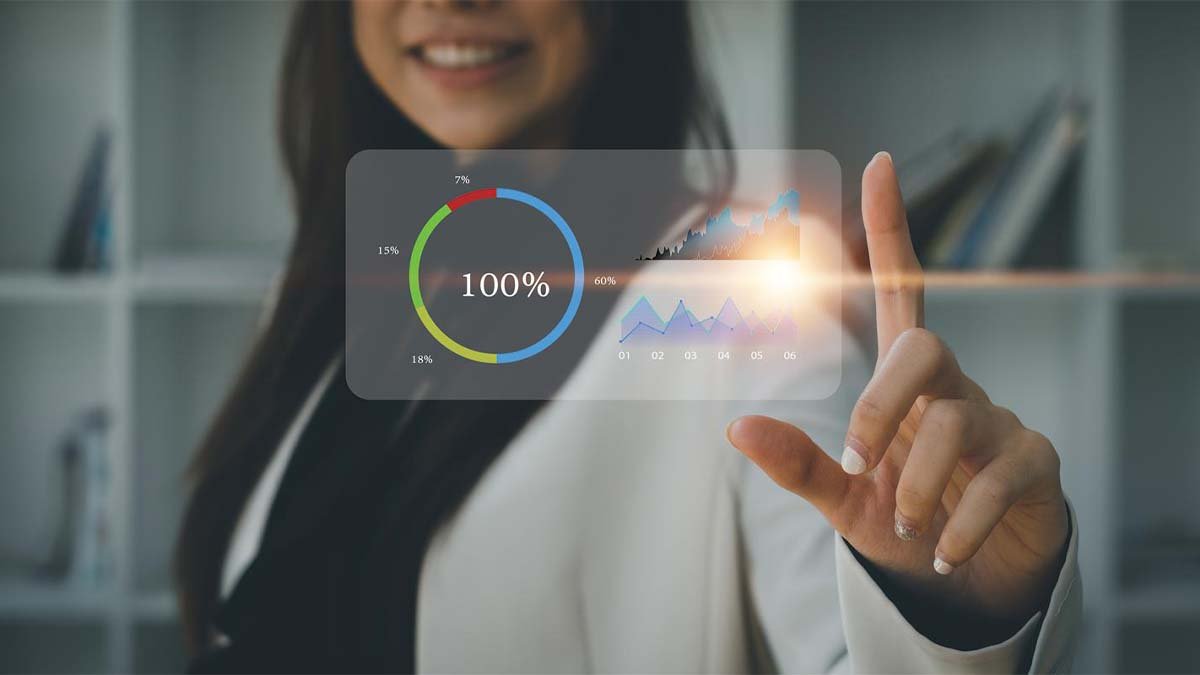Data is continually growing in scope, with the increasing range of analytical and supportive tools now allowing users to access insight from it at never before seen levels. Two of the leading fields when it comes to the handling and deductions pulled from data are data analytics and data visualization. In fact, these areas have become so central to business that over 97% of companies are investing in big data itself.
Yet, data visualization and data analytics are regularly confused, or simply thought of as synonyms for the same practice when it comes to business intelligence. While it is true that both of these fields actively deal with data – the movement, transformation, and pursuit of its understanding – they do so for different reasons and in distinct ways.
In this article, we’ll explore these two fields, demonstrating what they both do separately, before revealing how they work together to power business intelligence. Let’s get right into it.
What is Data Analytics?
Data analytics is the practice of taking raw data and transforming it into information that can be used to inform business practices. For the vast majority of the time, data analytics has the main goal of helping a business to understand more about itself, its customers, or the market within which it exists.
With this in mind, data analytics needs two main technologies to function:
- A data warehouse – Where companies can store huge quantities of data for analysis
- Data processing and analysis tools – Which companies can use to draw insight from their data.
Once data has been processed, analysts will then pass their insights to businesses, helping them to make better decisions in the future.
If your company is looking to scale its data analysis, then moving from local data warehouse storage to a cloud data warehouse is often the most effective way of doing so. With this in mind, we’ve linked a comparison of two market leaders, Druid vs ClickHouse, so that you can see exactly what these facilities offer.
What is Data Visualization?
Data visualization, on the other hand, is the physical representation of the information through graphs, charts, maps, or other visual mediums. It takes the patterns and trends that data analytics finds and then makes them comprehensible to absolutely anyone through visual design.
The vast majority of data visualization is conducted as graphs, with this being a format people run into every single day in the world of business.
What Are the Benefits of These Tools?
Both data analytics and data visualization have their place in the world of business, offering unique benefits. Although they both actively deal with data, they are not the same, with one focusing on transforming data into insight, and the other focusing on transforming that insight into something visually easy to understand.
That said, the main benefit of business analytics for businesses are as follows:
- Trends – Business analytics allows companies to identify market trends as they’re beginning to happen. With this information, they can then adapt their strategy to ensure they align with the current market movement, creating unique opportunities that would not have been available to them without this branch of analytics.
- Customer Insight – Customers produce a continual stream of data when they interact with a company website. Using this information within data analytics, data scientists can reveal insight about customer habits, information about the popularity of certain products, or the efficiency of certain aspects of a company website.
- Competitor Analysis – alongside internal investigation, data analysts can access public company information to draw insight into competitor brands. Using this information, they’re able to compare internal business data with external competitor data, giving insight into market performance within the context of the entire industry.
As you can see, these benefits are all about finding insight from a seemingly unorganized mass of data.
On the other hand, the main benefits of business visualization are slightly more focused on the end result of these insights.
- Understanding – Unsurprisingly, in the world of business, not absolutely everyone is a numbers person. Although a data set may clearly point to certain conclusions on paper, some people will be unable to understand unless it is in a visual medium. Data visualization allows absolutely anyone to understand data as it is in its most communicable form.
- Rapid – The human brain processes visuals 60,000x faster than it does with numbers. With this in mind, converting data into a visual medium allows people to quickly comprehend what is going on, helping them to instantly draw their own conclusions and put them to use.
- Pattern Spotting – When data is communicated via a visual medium, both patterns and outliers within the final data are significantly easier to see. With this physical representation, relationships between different metrics may become apparent, helping those in business to concentrate on what they deem important for the business.
Data visualization uses insights to then communicate them in the very best way possible, helping to increase their effectiveness as the insights are more easily understood.
How Do These Fields Work Together?
While data visualization and data analytics are most definitely not the same thing, they do have a great deal of communication across fields, forming a symbiotic relationship.
The process always starts with data analysis, where large quantities of unstructured data are collected, compiled into readable formats, and then analyzed using AI and analysis tools. Most of the time, specific data sets are investigated with particular questions in mind. In the world of eCommerce, a possible question could be: “Where in our sales process are we leaking most customers?”
By conducting analysis of where customers are clicking out of the sales funnel most frequently, data analysts can find the answer to this question. With this, they’ll have generated an insight that they can pass on to data visualization.
Out of the these two forms of data engineering, data visualization typically follows after data analysis. This is due to the fact that to visualize a data insight, there needs to be a result to communicate. Of course, the insight is directly generated through analysis, which is why visualization always comes second.
To help a business understand what the insight that data analysts have found actually means, the data visualization team will transform it into a visual medium, such as a graph. From there, the visual medium is much easier for those not involved with data processing to understand, helping to then put those insights into action.
Over time, these two distinct forms of working with data help businesses to grow, hone their strategy, and continue to succeed in the competitive world of eCommerce.




